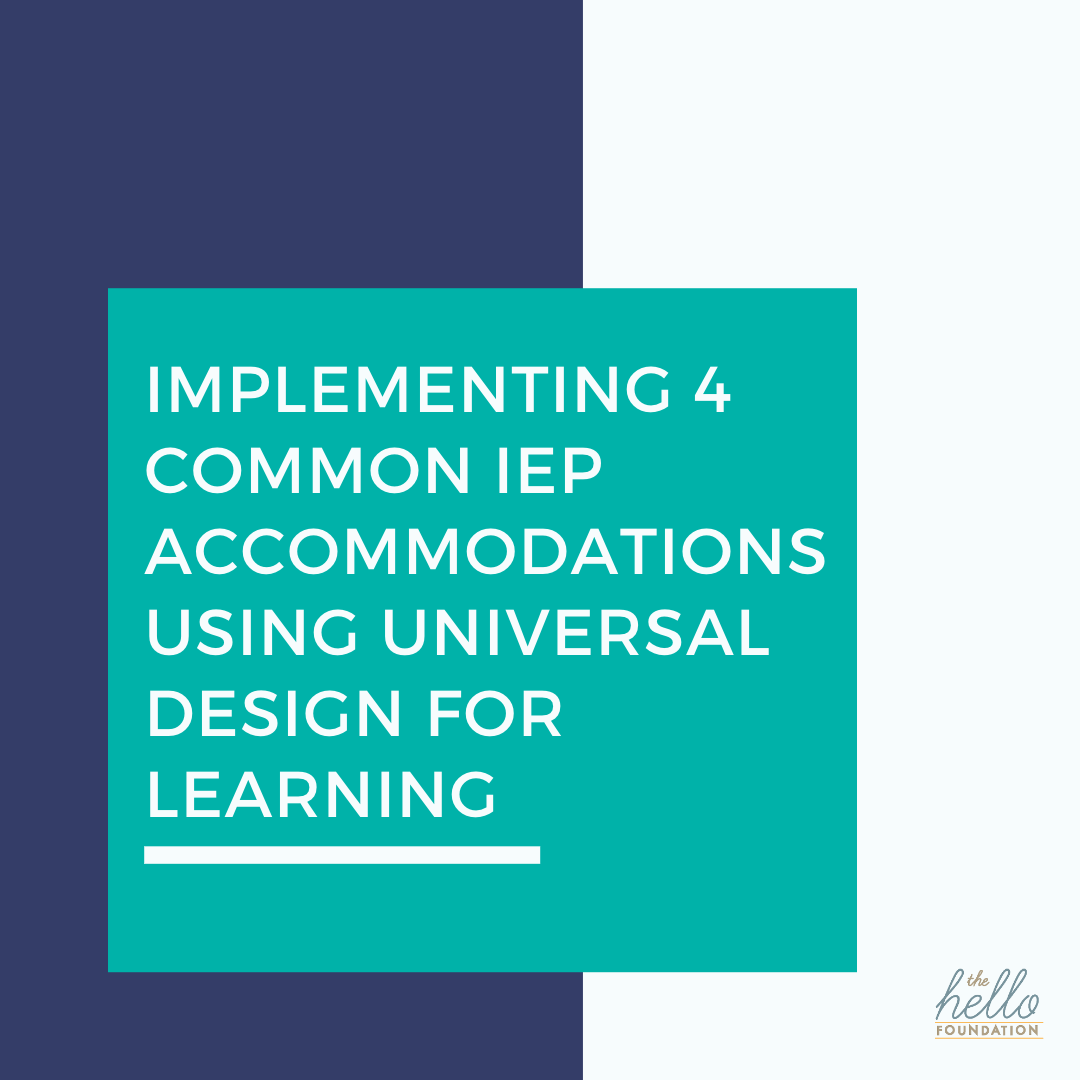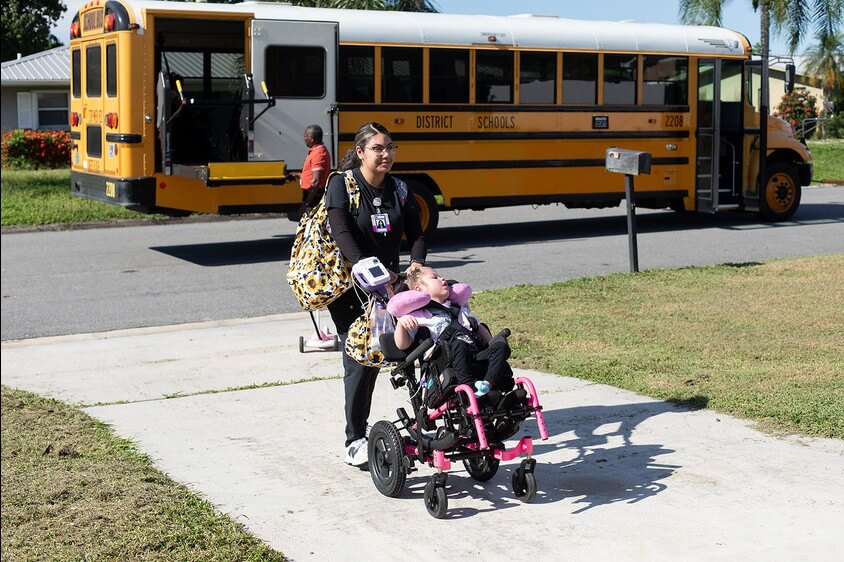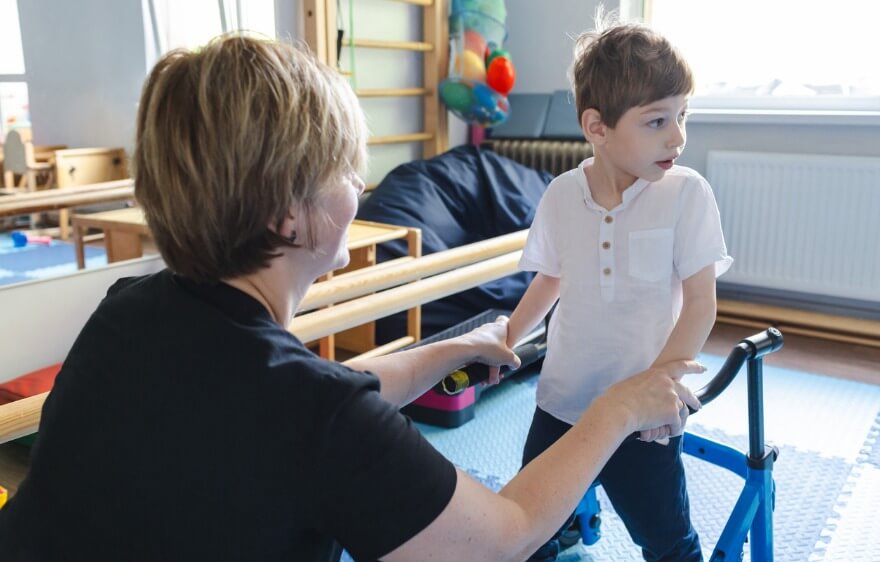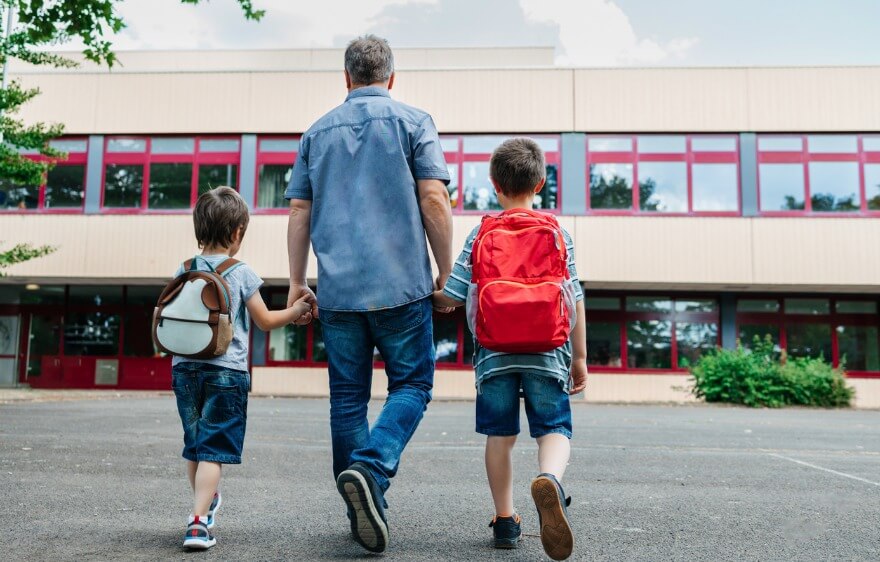IEP accommodations are an essential yet often overlooked component of the special education system. They allow “a student to complete the same assignment or test as other students, but with a change in the timing, formatting, setting, scheduling, response and/or presentation.” While an accommodation intends to assure that a student is given the best possible shot at both demonstrating existing knowledge and learning new information, they are often skimmed over in IEP meetings, filled in with boilerplate content, and not implemented with fidelity.
Part of the implementation struggle comes from the feeling that accommodations are just one more thing on everyone’s already overflowing plates. For educators who have shifted to a Universal Design for Learning (UDL) mindset, however, integrating many (if not all) standard IEP accommodations is a much simpler endeavor. In fact, they may not have to modify much at all! This is because the UDL framework “offers an overarching approach to designing meaningful learning opportunities that address learner variability and suggests purposeful, proactive attention to the design of goals, assessments, methods, and materials.” When UDL is in place, the work of accommodating the learning needs of special education students is simply part of an integrated daily practice that recognizes and adjusts to every student’s unique learning profile.
Let’s look at four common IEP accommodations, their accompanying UDL principle, and a few whole-class implementation ideas:
IEP Accommodation 1: Visual presentations of verbal material
UDL Principle: Representation
Why It’s Important: The average general education classroom disproportionately presents information auditorily, so students who struggle with auditory processing or have hearing loss are at an inherent disadvantage. To counteract this, make sure that everything that happens in the classroom has visual support to accompany it.
Whole-Class Implementation Ideas:
- Turn on captioning when watching videos
- Give students a hard or digital copy of the text when text is read aloud
- Present information using slides (PowerPoint, GoogleSlides, Prezi, etc.)
- Write critical points and assignment instructions on the whiteboard or document cam and leave them there for the duration of the lesson
- Give students and/or parents a hard copy of the lesson plan, key points, and/or learning objectives
- When asking students to manage their time, use a visual timer and schedule on the SMARTboard or document cam
IEP Accommodation 2: Give responses in a different form
UDL Principle: Action and Expression
Why It’s Important: When students are asked to respond to a teacher’s inquiries via a single modality, their disability may adversely impact what they’re able to show, and they may be unjustly penalized. Give students multiple opportunities across multiple modalities to demonstrate any given skill.
Whole-Class Implementation Ideas:
- Check for verbal and written mastery of a skill before deciding the next instructional target
- Allow students to use voice-to-text tools for written work
- Offer a variety of ways students can participate in class discussions — clicker polls, online discussions, student-led discussions, designated note-taker, etc.
- Offer a variety of ways for students to demonstrate their summative knowledge — slide decks, video, visual art, verbal presentation, written paper, etc.
IEP Accommodation 3: Work or take a test in a different setting
UDL Principle: Engagement
Why It’s Important: The hustle and bustle of the general education classroom can make it very difficult for some students to complete their work to the best of their abilities. Make sure that a variety of sensory, social, and physical settings are available in which students can complete their work.
Whole-Class Implementation Ideas:
- Explicitly teach the pros, cons, and expectations for different work environments, and how students can identify their optimal environments for different tasks
- Empower and teach students to self-advocate for their environmental needs for any given task
- Create a “setting menu” that students can choose from for any given type of assignment
- Create and label different zones within one classroom
- Work collaboratively with all staff in the building to create a variety of work settings and a schedule of when they’re available and to whom
- Plan ahead for when certain students might need a different setting (i.e., during a weekly quiz) and make prior arrangements
IEP Accommodation 4: Extra time for work completion
UDL Principle: Action and Expression
Why It’s Important: Teachers are under tremendous pressure to move through the curriculum at a prescribed pace that may be too fast for some learners. Make sure that time isn’t a variable that’s adversely impacting how students can complete assignments.
Whole-Class Implementation Ideas:
- Avoid giving large, grade-critical assignments at the end of the term when there is no option for extensions
- Allow all assignments to be turned in until the end of the grading period
- For substantial assignments with hard due dates, such as presentations or final papers, provide the requirements early to designated students, attaching the extra time to the beginning of the task rather than the end
- Integrate lessons about time management into every assignment, teaching students how to break down an assignment into smaller chunks, assess their own work habits and needs, etc (Marydee Sklar’s “Seeing My Time” program is excellent for this)
There are as many different types of IEP accommodations as there are students who need special education services, and this is as it should be! But this doesn’t have to mean more work for anyone on the special education team. Adopting even a few basic tenets of UDL in a classroom, building, or district will benefit unique and typical learners alike. When we recognize that every student deserves opportunities to demonstrate their strengths and grow in their areas of need, we have the opportunity to make our classrooms the inclusive, exciting places of learning they’re intended to be.






